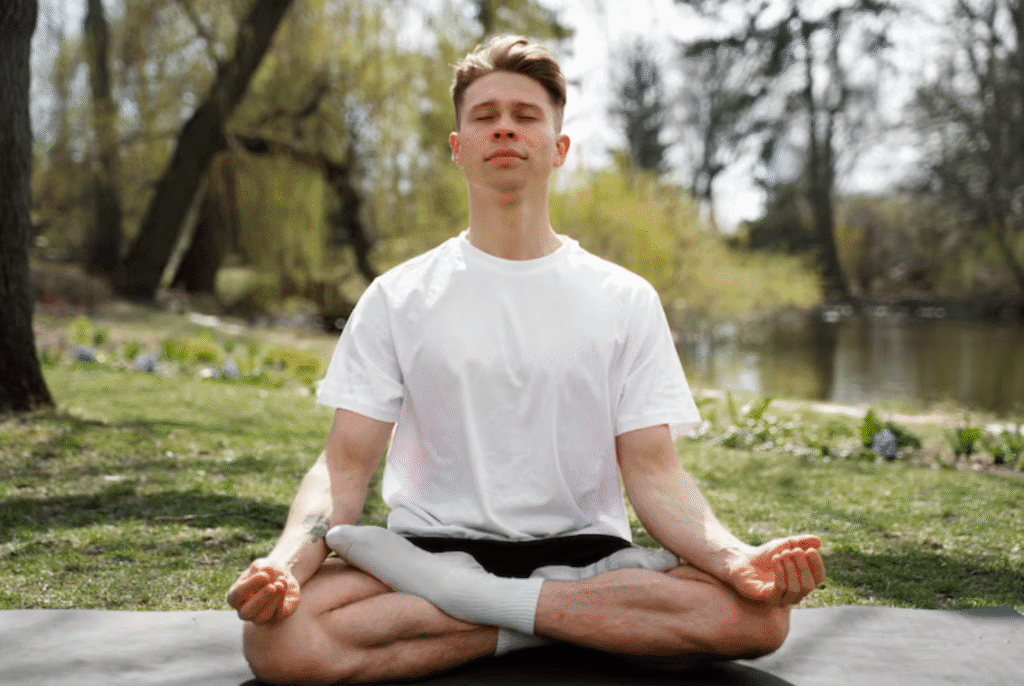Yoga is more than just physical exercise—it is a practice that works with your body’s subtle energies. At the core of this energetic system are the chakras, which are considered to be spinning wheels of energy that align along the spine. According to ancient yogic traditions, maintaining balance in these chakras is essential for overall health, emotional stability, and spiritual awakening.
This article explores the seven main chakras, their meanings, and how yoga poses (asanas), breathwork (pranayama), and meditation can help bring each one into harmony.
🌈 What Are Chakras?
Chakras are energy centers in the body, rooted in Indian spiritual traditions. The word chakra means “wheel” in Sanskrit, symbolizing the spinning motion of energy at each point. There are seven main chakras, each associated with different aspects of physical, mental, and spiritual health.
🔴 1. Root Chakra (Muladhara)
- Location: Base of the spine
- Represents: Safety, grounding, survival
- Signs of Imbalance: Fear, insecurity, financial instability
Yoga Poses:
- Mountain Pose (Tadasana)
- Warrior I (Virabhadrasana I)
- Garland Pose (Malasana)
Balancing Tips: Practice grounding postures, walk barefoot on natural surfaces, repeat affirmations like “I am safe and secure.”
🟠 2. Sacral Chakra (Svadhisthana)
- Location: Lower abdomen, about two inches below the navel
- Represents: Creativity, pleasure, emotional well-being
- Signs of Imbalance: Guilt, lack of passion, emotional numbness
Yoga Poses:
- Bound Angle Pose (Baddha Konasana)
- Pigeon Pose (Eka Pada Rajakapotasana)
- Goddess Pose (Utkata Konasana)
Balancing Tips: Engage in creative activities, enjoy water-based yoga, and explore hip-opening movements.
🟡 3. Solar Plexus Chakra (Manipura)
- Location: Upper abdomen/stomach
- Represents: Confidence, personal power, willpower
- Signs of Imbalance: Low self-esteem, anger, digestive issues
Yoga Poses:
- Boat Pose (Navasana)
- Plank Pose
- Warrior III (Virabhadrasana III)
Balancing Tips: Do core-strengthening practices, set personal goals, and repeat affirmations like “I am confident and in control.”
💚 4. Heart Chakra (Anahata)
- Location: Center of the chest
- Represents: Love, compassion, forgiveness
- Signs of Imbalance: Grief, loneliness, difficulty in relationships
Yoga Poses:
- Camel Pose (Ustrasana)
- Cobra Pose (Bhujangasana)
- Bridge Pose (Setu Bandhasana)
Balancing Tips: Focus on heart-opening poses, practice loving-kindness meditation, and express gratitude daily.
🔵 5. Throat Chakra (Vishuddha)
- Location: Throat
- Represents: Communication, truth, self-expression
- Signs of Imbalance: Shyness, dishonesty, sore throat
Yoga Poses:
- Shoulder Stand (Sarvangasana)
- Fish Pose (Matsyasana)
- Lion’s Breath (Simhasana Pranayama)
Balancing Tips: Chant mantras, sing or journal your thoughts, speak your truth kindly and clearly.
🟣 6. Third Eye Chakra (Ajna)
- Location: Between the eyebrows
- Represents: Intuition, insight, imagination
- Signs of Imbalance: Confusion, headaches, lack of focus
Yoga Poses:
- Child’s Pose (Balasana)
- Dolphin Pose
- Seated Forward Fold (Paschimottanasana)
Balancing Tips: Meditate with your focus on the brow, practice mindfulness, and reduce digital stimulation.
⚪ 7. Crown Chakra (Sahasrara)
- Location: Top of the head
- Represents: Spirituality, higher consciousness, connection to the universe
- Signs of Imbalance: Disconnection, lack of purpose, depression
Yoga Poses:
- Headstand (Sirsasana) – for advanced practitioners
- Corpse Pose (Savasana)
- Lotus Pose (Padmasana)
Balancing Tips: Practice silent meditation, study spiritual texts, and spend time in stillness.
🌟 Final Thoughts
Balancing the chakras is not about perfection—it’s about awareness. Through mindful yoga, breathwork, and meditation, we can learn to recognize imbalances and restore harmony to our energy centers. Whether you’re seeking physical healing or spiritual connection, aligning your chakras through yoga offers a holistic path toward wholeness.




